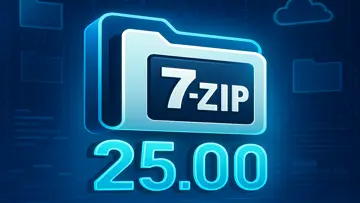Unlocking the Mysteries of Traditional Chinese Medicine with SoftTcm
Four Diagnostic Methods of TCM by SoftTcm provides a comprehensive exploration of the foundational assessment techniques in Traditional Chinese Medicine, making it easier for practitioners to integrate ancient wisdom into their modern practice.
Review of Four Diagnostic Methods of TCM by SoftTcm
Four Diagnostic Methods of TCM by SoftTcm is a comprehensive software application designed for traditional Chinese medicine practitioners. This innovative tool aims to streamline and enhance the diagnostic process, making it easier for TCM practitioners to analyze symptoms and provide accurate treatment plans.
Key features of Four Diagnostic Methods of TCM include:
- Tongue Diagnosis: This feature allows practitioners to analyze the shape, coating, color, and other characteristics of a patient's tongue to determine their health condition according to TCM principles.
- Pulse Diagnosis: With this feature, practitioners can input pulse readings and receive insights into the patient's overall health status, including the functioning of various organs and meridians.
- Facial Diagnosis: By inputting facial observations such as complexion, skin texture, and any specific markings, practitioners can further refine their assessment of the patient's health.
- Body Constitution Analysis: This feature allows for a detailed analysis of the patient's overall body constitution, helping practitioners tailor treatment plans to individual needs.
Four Diagnostic Methods of TCM by SoftTcm offers a user-friendly interface and robust features that can assist TCM practitioners in conducting thorough and accurate diagnostic assessments. Whether you are a seasoned practitioner or just starting in the field of traditional Chinese medicine, this software can be a valuable tool in your practice.
Overview
Four Diagnostic Methods of TCM is a Freeware software in the category Home & Hobby developed by SoftTcm.
The latest version of Four Diagnostic Methods of TCM is 1.0, released on 02/18/2008. It was initially added to our database on 08/24/2007.
Four Diagnostic Methods of TCM runs on the following operating systems: Windows.
Four Diagnostic Methods of TCM has not been rated by our users yet.
Pros
- The software provides a comprehensive database of information about the Four Diagnostic Methods in Traditional Chinese Medicine (TCM).
- It offers detailed explanations and illustrations for each diagnostic method, making it educational and easy to understand for users.
- Users can practice their diagnostic skills by utilizing interactive quizzes and case studies available within the software.
- The software allows for easy access to TCM diagnostic knowledge on-the-go, which can be beneficial for students, practitioners, and enthusiasts.
- It supports multiple languages, making it accessible to users from various regions around the world.
Cons
- The software may require a learning curve for users who are new to TCM concepts and terminology.
- There could be limited or outdated information within the software, as TCM practices and knowledge evolve over time.
- Technical glitches or bugs may occur within the software, affecting the user experience and functionality.
- The software may not offer personalized or tailored recommendations based on individual user inputs or preferences.
- The pricing of the software could be a barrier for some users, especially if they are looking for a free or more affordable alternative.
FAQ
What are the Four Diagnostic Methods of TCM?
The Four Diagnostic Methods of Traditional Chinese Medicine (TCM) are inspection, auscultation and olfaction, inquiry, and palpation. These methods are used to gather information about the patient's condition to make a TCM diagnosis.
What is inspection in TCM diagnosis?
Inspection involves observing the patient's external appearance, such as their complexion, facial expressions, tongue, and body movements. These observations can provide valuable information about the patient's overall health and specific conditions.
What is auscultation and olfaction in TCM diagnosis?
Auscultation involves listening to sounds in the patient's body, such as their breathing or heartbeat, to gain diagnostic insights. Olfaction refers to smelling certain odors emitted by the patient's body or breath. Both methods can provide additional information for TCM diagnosis.
What is inquiry in TCM diagnosis?
Inquiry involves asking the patient questions about their medical history, lifestyle, symptoms, and other relevant information. Gathering this information helps TCM practitioners understand the underlying causes of the patient's condition and determine the appropriate treatment.
What is palpation in TCM diagnosis?
Palpation involves physically examining the patient's body by touching various areas such as the pulse, abdomen, or meridian points. Through palpation, TCM practitioners can assess different aspects of the patient's condition, including Qi (energy) flow, organ function, and overall constitution.
How do TCM practitioners use these diagnostic methods together?
TCM practitioners use a combination of the Four Diagnostic Methods to gather comprehensive information. They may analyze visual observations, listen to sounds, ask questions, and perform palpation to form a holistic view of the patient's condition. This integrated approach helps in making an accurate TCM diagnosis.
Are the Four Diagnostic Methods unique to TCM?
While other medical systems may also employ similar diagnostic techniques, the specific combination of inspection, auscultation and olfaction, inquiry, and palpation is considered fundamental to Traditional Chinese Medicine. These methods have been refined and practiced for thousands of years in TCM.
Who can perform the Four Diagnostic Methods in TCM?
The Four Diagnostic Methods are typically performed by licensed TCM practitioners who have undergone extensive training in Traditional Chinese Medicine. They have in-depth knowledge and experience in utilizing these methods to diagnose and treat patients.
Why are the Four Diagnostic Methods important in TCM?
The Four Diagnostic Methods provide a systematic framework for TCM practitioners to understand the patient's condition from multiple perspectives. This comprehensive assessment helps in identifying patterns of disharmony and determining the most appropriate treatment strategies for each individual.
Can the Four Diagnostic Methods replace modern diagnostic methods?
The Four Diagnostic Methods provide valuable insights into a patient's condition from a TCM perspective. While they can be used as primary diagnostic tools in some cases, they are generally seen as complementary to modern diagnostic methods. Integrating both approaches can enhance patient care by considering both traditional wisdom and scientific advancements.

Elena Angelini
I'm Elena, your go-to software reviewer at UpdateStar and tech enthusiast. Whether you're a user seeking the latest software titles or software news I've got you covered. When I'm not diving into the latest software, you can find me exploring nature trails, camping under the stars, or competing in online multiplayer games. My reviews are designed to be fun, engaging, and packed with all the details you need to make informed decisions.
Latest Reviews by Elena Angelini
Latest Reviews
|
|
Art
Unlock Your Creativity with Art by Fogware Publishing |
|
|
8-Bit Armies
Nostalgic Strategy Reimagined in 8-Bit Armies |
|
|
boxes
Innovative Design Tool for Efficient Organization |
|
|
eduVPN Client
Secure and Easy Access to Educational Networks with eduVPN Client |
|
|
o2 Cloud
Seamless Cloud Solutions with o2 Cloud by O2-De |
|
Gorn
Brutal Gladiatorial Combat in VR Delivers an Unforgettable Experience |
|
|
UpdateStar Premium Edition
Keeping Your Software Updated Has Never Been Easier with UpdateStar Premium Edition! |
|
|
Microsoft Edge
A New Standard in Web Browsing |
|
|
Google Chrome
Fast and Versatile Web Browser |
|
|
Microsoft Visual C++ 2015 Redistributable Package
Boost your system performance with Microsoft Visual C++ 2015 Redistributable Package! |
|
|
Microsoft Visual C++ 2010 Redistributable
Essential Component for Running Visual C++ Applications |
|
|
Microsoft OneDrive
Streamline Your File Management with Microsoft OneDrive |






